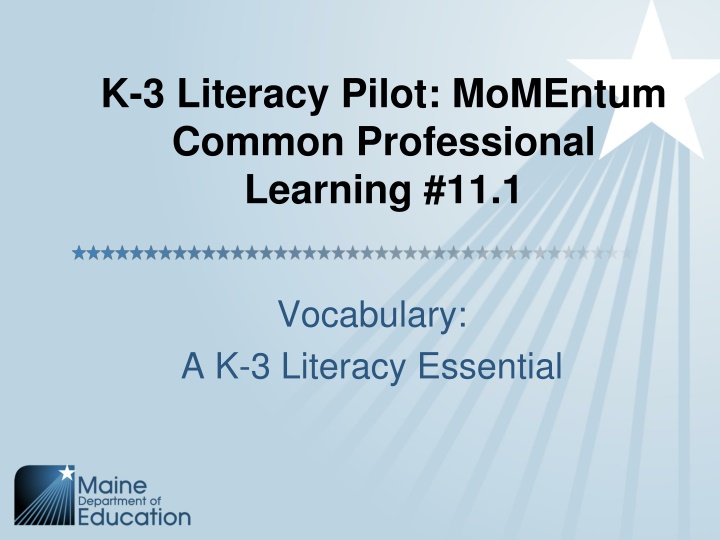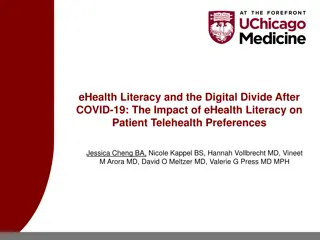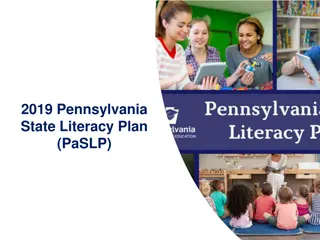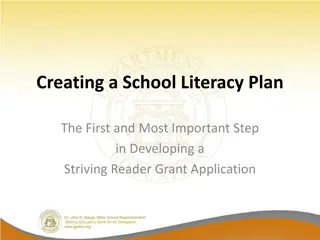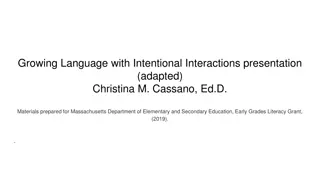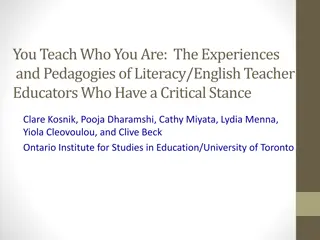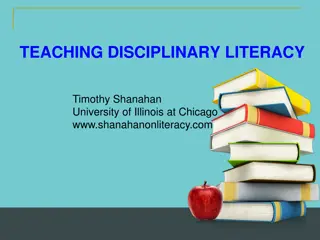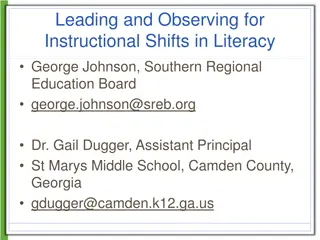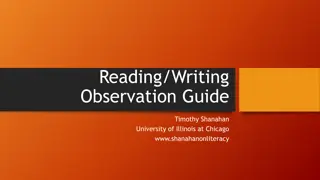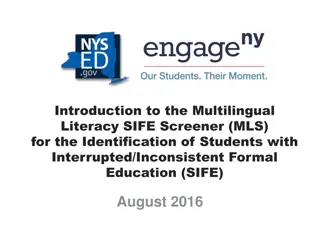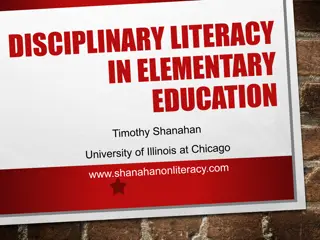Insights into Vocabulary Instruction for K-3 Literacy Educators
Explore the significance of vocabulary instruction, delve into vocabulary research categories, and learn about effective teaching strategies through a decision-making model. Discover research-backed methods like read-alouds, repeated readings, and concept mapping that boost vocabulary development in young learners. Engage in discussions on selecting and teaching vocabulary, enhancing your pedagogical approach to support students' language acquisition.
Download Presentation

Please find below an Image/Link to download the presentation.
The content on the website is provided AS IS for your information and personal use only. It may not be sold, licensed, or shared on other websites without obtaining consent from the author.If you encounter any issues during the download, it is possible that the publisher has removed the file from their server.
You are allowed to download the files provided on this website for personal or commercial use, subject to the condition that they are used lawfully. All files are the property of their respective owners.
The content on the website is provided AS IS for your information and personal use only. It may not be sold, licensed, or shared on other websites without obtaining consent from the author.
E N D
Presentation Transcript
K-3 Literacy Pilot: MoMEntum Common Professional Learning #11.1 Vocabulary: A K-3 Literacy Essential
Learning Intentions Educators will: discuss the importance of vocabulary instruction. develop a common understanding of vocabulary research. discuss instructional implications.
Importance of Vocabulary Vocabulary Research Sort With a partner sort the research into 3 categories. Importance of Vocabulary How Vocabulary Develops How to Teach Vocabulary
Research Hattie Vocabulary Programs .67 effect size Duke Intentional and ambitious efforts to build vocabulary and content knowledge Abundant reading material and reading opportunities in the classroom Read alouds of age-appropriate books and other materials, print or digital Repeated Readings .67 effect size Concept Mapping .60 effect size
Vocabulary Turn and Talk then Share How do you currently select vocabulary to teach? How do you currently teach vocabulary?
A Decision Making Model For Selecting Vocabulary For Direct Instruction (Fisher, Frey & Hattie, 2016) Condition Questions to Ask Representative Is the word representative of a family of words the student will need to know? Is the word or phrase representative of a concept the student will need to know? If yes, proceed to next section. Transportable Will the word or phrase be needed in discussion, reading, and or writing tasks? If yes, proceed to next section. Now determine how the word will be acquired. Frequency Does the word or phrase appear frequently in the text? Contextual Analysis Does the word or phrase present an opportunity for the student to apply contextual analysis skills to resolve word meaning? Structural Analysis Does the word or phrase present an opportunity for the student to apply structural analysis skills to resolve word meaning? If the word appears frequently, and presents opportunities to resolve word meaning using contextual or structure analysis, the word probably does not need direct instruction. If the word is essential, and yet cannot be resolved through frequent use, contextual analysis, or structural analysis, the word or phrase should be introduced through direct instruction.
Aspect of vocabulary What to Record / Look For Sample Notes You Might Take If child stops to search and determine what a word means Paused on suburbs and read on Stopped and asked what lookout means Recognition of unknown words Scanning or rereading behaviors Uses pictures or points to other words in text that define a word Tries another word that makes sense Reread and self corrected to make change make sense on page 6 Checked picture to figure out snail Using context to determine word meaning Stops to reflect on phrases used in books that are not in our oral vocabulary Noticed off they went and thought about what it meant Off her rocker? Thinking about book language and idioms Points out bold or italicized words and uses these to figure out word meaning Noticed bold word and showed me the definition following it Showed me where text said or and gave the meaning in NF Using text features like bold or italicized words in informational text Tells new meaning for a known word Said rock has two meanings there Learning new definitions of multiple meaning words Notices prefixes and suffixes and uses them to figure out meaning of new word Uses a root word and makes a connection Saw re and said that mean again Figured out meaning of rebound using re and bounce Using word parts to determine word meanings Uses new vocabulary words in discussion after reading Used humongous and lonesome in discussion after reading Trying out new words in oral written vocabulary D.Diller 2017
What Child Is Having Trouble With Possible Teacher Prompts Recognition of unknown words You stopped. What can you do to figure out what that word means? Do you know that word? Asking about that word can help you learn what it means. ______ means _____ Using context to determine word meaning Use the picture to help you figure out what that means. Read on a bit. See if you can find clues to what that word means. Which words give you a clue to the word s meaning? What do you think it mean? Why? What s another word you could use here that makes sense? Thinking about book language and idioms What do you think off they went means? The author said legs like sticks. What do you picture there? Using text features like bold or italicized words, dashes, and or in informational text to figure out what those words mean When a writer uses bold words, he s showing you that those words are important. Good noticing. Look at this (point to dash or word or). It tells us the definition will follow! It s written in italics. How can that help you? D. Diller, 2017
Learning new definitions of multiple meaning words What does _____ usually mean? Does it mean that here? What do you think it means? This word has more than one meaning. What could it mean here? Using word parts to determine word meanings You know this part. What does re-mean? Look at our suffix chart. What does ful mean? What could this word mean? Fina part you know. What does that part mean? Trying out new words in oral and written vocabulary You sound so grown up when you use those million dollar words. I love that new word! Use it at home to impress your family! What a great word choice! I can really picture what you mean when use that word. Making the Most of Small Groups Differentiation for All Diller, 2007
Instructional Techniques Create a word sort for students using Explain Everything. Create a word sort for students using paper. How might you include technology? Select a practice vocabulary activity from the site below and try it out http://www.fcrr.org/resources/resources_sca.html Plan a lesson that explicitly teaches students how to use context clues. Create a vocabulary Kahoot!
Exit Slip 3 Learnings 2 Techniques you will try. 1 Question about Vocabulary
